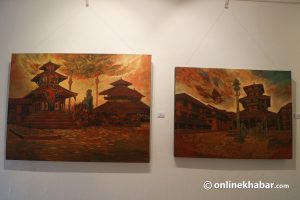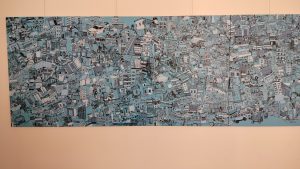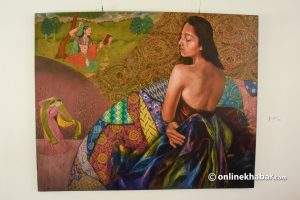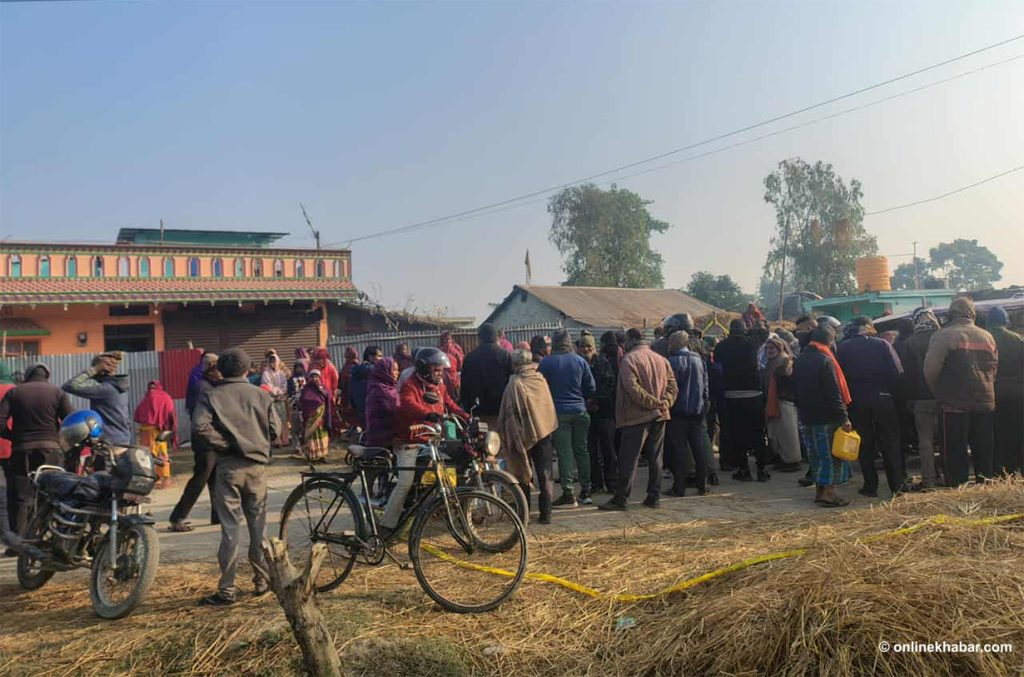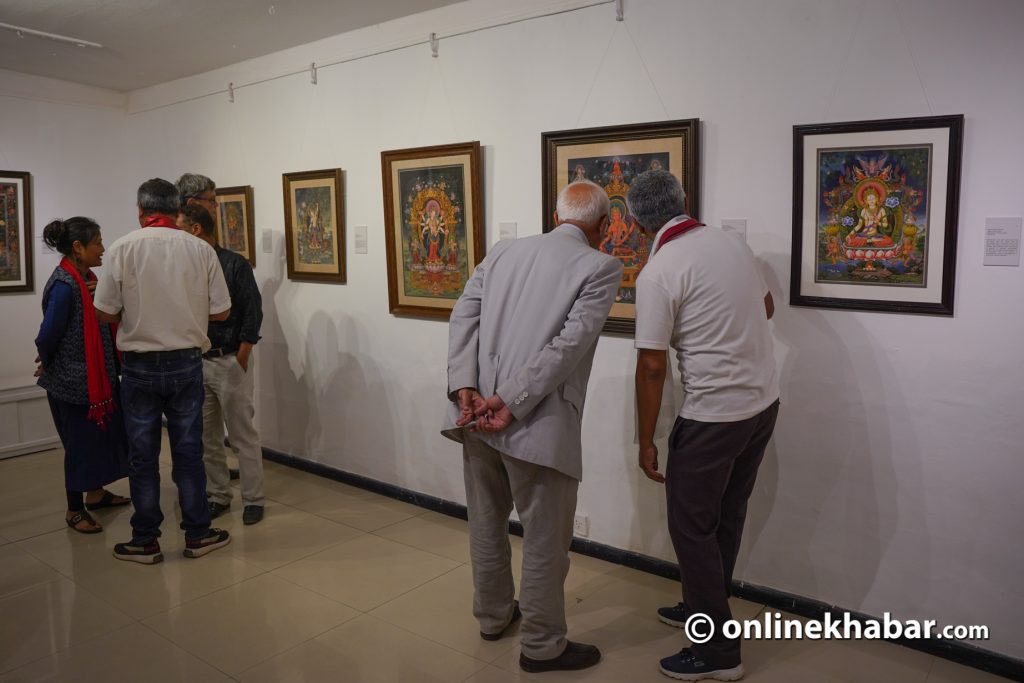
In comparison to the two other cities of the Kathmandu Valley, Bhaktapur arguably is the most beautiful and cleanest city. The art and architecture around the city along with the settlements have helped to maintain the medieval city-state.
This can be reflected in paintings by traditional and contemporary artists affiliated to Khwopa Paubha Chwomi Pucha and Devotee Artist Circle, Bhaktapur, currently on display at Siddhartha Art Gallery, Babermahal Revisited. Like the beauty of the city, these artists have also showcased the beauty of traditional paubha paintings and contemporary paintings.
The exhibition, From Bhaktapur to Kantipur, began on April 19 and will continue until May 19.
The amalgamation of traditional and contemporary artworks

The exhibition, titled From Bhaktapur to Kantipur, is an amalgamation of traditional and contemporary paintings. This has been curated aptly by the gallery.
The annexe gallery there features 11 contemporary artists on its ground and first floors. Then, the main gallery features traditional paintings by 29 traditional artists.
This is the first time that all the members of Khwopa Paubha Chwomi Pucha have showcased their works under one roof.
About the exhibition, Sangeeta Thapa, the founder and director of Siddhartha Art Gallery, says, “The collection of paintings for this show has been over five years in the making, and we are very honoured to be hosting this exhibition with the traditional artists of Bhaktapur.”
With the idea of moving together and supporting each other, young contemporary artists have also joined From Bhaktapur to Kantipur, where they showcase conceptual paintings inspired by pop culture, music and socio-political aspect of society.
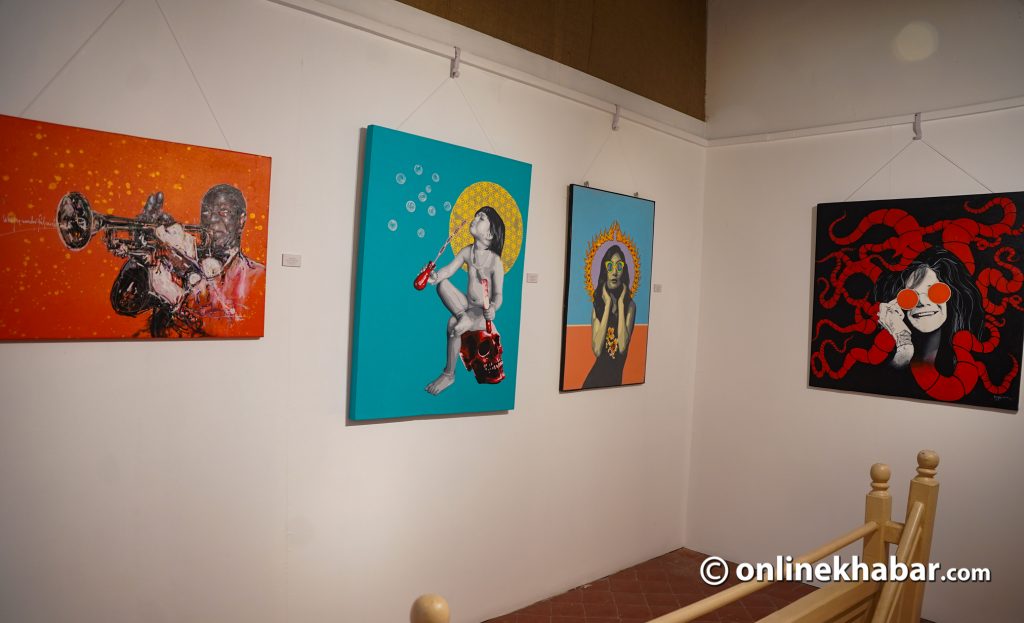
Connecting 2 generations
According to Thapa, the idea of showcasing these two different shows from Bhaktapur serves two purposes.
“It sheds light on how the traditional and spiritual, yet still shapes the contemporary narrative of a younger generation of artists,” She adds, “And how a bold and ever-expanding younger generation of artists from Bhaktapur is asserting their space in the contemporary scenario with works that celebrate Bhaktapur’s culture, agrarian landscape, pressures of the urban, and with socio-politically informed works.”
Religious motifs such as Ganesh, Manjushree, Lokeshvara, Lakshmi, Saraswati, Buddha, Tara and Chakrasamvara have been used by traditional artists using mediums such as gouache on cotton canvas, mixed colour, stone colour and gouache on wood.
The details in these traditional paintings are flawless and the colours and lines are harmonious. Then, viewers can see the different styles of these artists even though using the same motifs.
Traditional artists Mrigendra Karmacharya and Rabindra Munakarmi have portrayed Vajrayogini using mixed colour and gouache on cotton canvasses, respectively.
Though the iconography is similar, the mediums they have used and their style of playing with the colours help the viewers distinguish these two paintings. Karmacharya’s painting is more intension with vibrancy while Munakarmi’s painting is subtle with calmness.
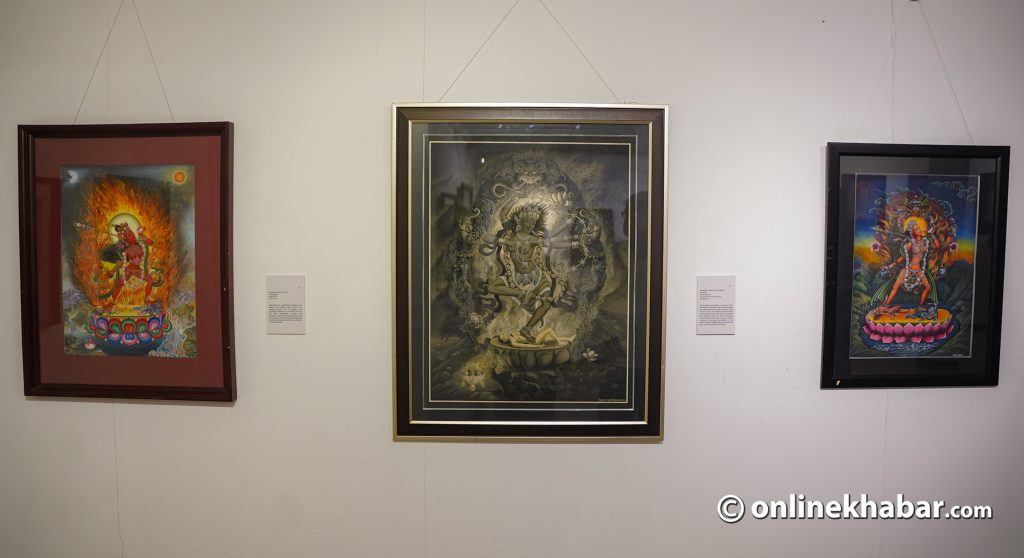
Contemporary artists have also used religious motifs, but they have interwoven the contemporary context into them. Artist Rabita Kisi using etching (printmaking technique) in Hope depicted an upright stupa and lotus flowers rising up around the stupa amid the chaos of broken wooden materials of structures. She says she wanted to depict the scenario that was seen during the 2015 earthquake.
Then, Sudeep Balla, using mixed media, has created Masaan Bhairav. This is similar to the traditional Bhairav, but it also has lines that strip off the colours as if depicting a meaning that modernity is stripping the value of ancient knowledge. Maybe it also has a warning that if not realised its value, there will be emptiness and nothing that is valuable.





